A
Seeder Futures
24.11.2023 – 18.02.2024
THE ART GALLERY OF WESTERN AUSTRALIA
Seeder Futures saw me torrenting the Western Australian State Art Collection, and was descibed as a ‘unique collective action statement’ [1] that highlighted gaps in digital access to Australian art collections.
The work resulted in over 1,600 artworks in the public domain from the WA State Collection being ‘freed’ – released for the first time ever to members of the public as high resolution digital images.

Seeder Futures was a distributed, digital artwork that established a peer-to-peer (P2P) file sharing protocol between the community of Kepa Kurl/Esperance and the Art Gallery of Western Australia (AGWA). Seeder Futures consisted of a shared folder of files including high-resolution digital images of the entire collection of 2D public domain artworks in the State Collection, alongside filmed interviews with community members on their practices of giving and sharing within community. This was a distributed artwork – these files were collectively stored and hosted by 13 Esperance community members alongside a PC at AGWA.
Seeder Futures enacted an alternative way AGWA’s state collection could be stored, distributed and made accessible to a rural community. While this artwork was exhibited within AGWA's gallery, it also functioned as an active intervention into the museum’s digital collection practices. Seeder Futures grew out of an 18 month-long process of futures research, conversations and workshopping with different arts communities. In this case study, I’ll share more about how this project came to be, the arts and futures research process that shaped it, and why I chose to work with BitTorrent as a medium to explore the collective storage, distribution and sharing of cultural collections.
I’ll also talk to the importance of relational as well as digital infrastructures in enacting alternative digital practices, and how these contribute to a wider scope of possibility for shared futures between museums, their collections and the communities they are embedded within.
This is Cannery Arts Centre, in Esperance. Esperance is an eight-hour drive from Boorloo / Perth – the world’s most remote city. Cannery Arts Centre is a small community arts hub that provides an exhibition space, ceramics and print-making studio, music rehearsal rooms, a community garden and performance and gathering spaces for the Esperance community. Cannery Arts Centre also became my home, while I was artist in residence here for a total of 6 months, spending 6-8 weeks at a time over three residencies, between 2022 - 2023. I was artist-in-residence as part of the Rural Utopias project, commissioned by SPACED in partnership with the Art Gallery of Western Australia (AGWA). As one of nine artists on this project, we were asked to engage notions of the ‘rural utopic’, and also asked to engage the AGWA State collection.
I developed and piloted the Shared Futures Salon as a way to hear and learn from Esperance community members about their current cares and concerns, and the values that underpin their ideas of the future. The Shared Futures Salon became a method for gathering, analysing and synthesising data on community futures with others. For me, it also became a relational way into this project and different communities; a way not just ‘know’ but to ‘get to know’.
In conversation with farm manager Lisa Jeitz. Photo by Katie Witt.
The Shared Futures Salon creates transitory spaces for conversation, reflection and contemplation with(in) communities. I ran a pop-up Shared Futures Salons at the local Esperance Sunday market, and took the Shared Futures Salon on the road – speaking with people in their homes or on their farms. I also took up residence in an empty shopfront at Cannery Arts Centre. Over four weeks, several cups of tea, numerous conversations, and hundreds of kilometres of road, I offered space for visitors to reflect on the questions of ‘time’ ‘change’ and ‘good futures’ through conversation, drawing, or personal written reflection.
A participant writes a personal reflection on change. Photo by Ana Tiquia.
In the Salon I centre the notion of ‘shared futures’. As a framework, this recognises the future as plural, with futures often contested but most importantly shared. The synthesis – carried out by myself in collaboration with community members – emphasises the surfacing of tensions, rather than homogenising differences in values and perspectives on the future.
Community synthesis and discussion. Photo by Katie Witt.
Read more about themes and tensions which emerged from the Shared Futures Salon in Esperance, in my SPACED blog post.
After my first residency in Esperance, I brought the Shared Futures Salon to AGWA and spoke with curators and digital collections managers about how they experienced time through the collection, what changes they had seen to collections and curatorial practices, and what they considered as 'good futures' for the institution. The key themes that emerged from several conversations were that: curators and collections managers see art collections as configurations of power – particularly state and colonial power. With collections forming a constellation of power, access to a collection becomes rendered as privilege. In terms of change, curators and collections staff spoke of perceiving a shifting role of the ‘curator’ from an institutional and collections ‘gatekeeper’ to facilitator, or distributor of power to communities or ‘audiences’. Many staff reflected on digital and networked technologies and spoke of digital collections, platforms or mechanisms allowing for increased access, shared ownership or self-curatorship of a collection by communities external to the institution. A ‘good future’ for AGWA was largely expressed as one in which people could access the collection from anywhere; one where wider communities have agency to access, research, and curate the collection on their own terms.
Despite AGWA curators’ and collection managers’ enthusiasm for collections digitisation and digital platforms for sharing them, they acknowledged several barriers to accessing the AGWA collection online. Digitisation of state collections promises to increase access, particularly for rural populations who might never visit a state gallery. But several collecting institutions, including AGWA have practices, policies, and web infrastructures that restrict this.

At the time of my speaking with AGWA staff, there had been significant work undertaken to digitise their collection. Despite this, the Gallery didn’t have the infrastructure to make digital copies (known as surrogates) of their artwork accessible in high resolution online. At the time of writing this case study AGWA’s collections online portal [6] still only has the capability to display thumbnail images of works, and there is no ability to download digital surrogates of artworks that are in the public domain. Ways to clearly identify artworks which are in the public domain and could be easily shared are also absent.
I decided to research what the barriers to sharing digital surrogates of the WA State Art Collection might be. What might prevent a state gallery with an extensively digitised collection from sharing this collection online and making it accessible? In my research I came across a paper by Jani McCutcheon, an Intellectual Property (IP) Law researcher and Associate Professor at University of Western Australia (UWA), whose research focuses on copyright and moral rights in the context of literature and visual art.

Metropolitan Museum of Art’s open access collection. Screenshot, 13.04.23
In her paper: ‘Digital access to culture: copyright in photographs of two-dimensional art under Australian copyright law’[7], Jani reviewed AGWA’s collection access policies, alongside those of other Australian state galleries. Her research found that access to high resolution files of public domain work is restricted by many Australian state galleries, and that copyright is often asserted over artwork in the public domain through its digitisation and photography [7]. International peers, such as the Metropolitan Museum of Art, NYC and the Rijksmuseum, Amsterdam have made thousands hundreds of thousands of digital surrogates of their public domain collections available under Creative Commons Zero (CC0) licenses that enable free use and re-use by the public; both museums have established open access and open data initiatives respectively. In her paper, Jani finds that Australian state galleries, including AGWA have over-claimed copyright to photos of their collection, particularly of two-dimensional public domain works. She urges Australian cultural institutions to ‘liberate’ their digital surrogates of artwork in the public domain, stating that:
“It is the disseminative capacity of the photograph that makes it such an integral component in cultural sharing and explains its socio-cultural value. It is essential that images of public domain material be emancipated”(McCutcheon, 2017 p.443)
In Australia, state collections are technically owned by the people of the state and are held in trust by the state collecting institutions such as museums, galleries, libraries and archives. I found it interesting to consider the WA State Art Collection as owned by the people of Western Australia, yet accessible to few. I reached out to Jani after reading her paper, and was met by her warm and enthusiastic response to my plans to make an artwork that could enact an alternative way to share the digitised WA State Art Collection. We met over Zoom and discussed possibilities for sharing this collection, based on her research. From here, I refined the concept for this work: I would invite AGWA to share their entire digitised 2D public domain collection of artworks in high resolution with the People of Esperance.
I wanted to explore what an art collection truly owned by The People of Western Australia might look like. I began to explore alternative practices, systems and infrastructures that could support a collectively owned, held, and distributed state collection. I began working with older, existing peer-to-peer (p2p) and decentralised file sharing protocols such as BitTorrent as a way to rethink the storage and distribution of museum digital collections, and question the normalistation of centralised storage and hub and spoke modes of distribution of digitised public collections.
Decentralised p2p protocols such as BitTorrent have been in existence for over 20 years, and offer real-world examples of how digital commoning and distributed ownership of digital culture can, and is being practiced. However, as torrenting has become synonymous with piracy, illegal fle-sharing and large-scale intellectual property (IP) legal suits, torrenting has not seriously been considered by art galleries and museums as a genuine way to distribute, store, preserve, or provide access to publicly owned digital collections.
In the 18 months prior to developing this work, blockchain technology-based NFTs (Non Fungible Tokens) had been adopted by the international art market as a means to establish private ownership of digital artworks, and create 'scarcity' of digital assets – effectively making digital culture valuable and exchangeable within a capitalist art market.[8] While blockchain technology and p2p file sharing protocols share the principle of decentralisation, p2p fle sharing utilises distribution of ownership as a way to secure accessibility, availability and preservation of digital assets, whereas blockchain creates distributed public ledgers that register the private ownership of digital assets.
I believe p2p fle-sharing protocols deserve genuine consideration by museums and galleries. They offer legitimate ways in which publicly owned, digitised collections and digital works might be made more accessible, providing robust and sustainable ways for them to be stored, preserved and distributed. At the same time, p2p fle-sharing remains provocative. While blockchain technology and NFTs are touted as 'disruptive' to industries, they remain appealing to the market as they replicate its logics of fungibility and exchange, and enable private property ownership to be extended to assets in the digital realm. I'm interested in the unsettling nature of p2p fle-sharing, precisely how it troubles the notion of private property. I see p2p fle-sharing as embodying a prefgurative politics; it demonstrates alternative forms of economic activity, participation and value, and offers a tangible vision of how culture might genuinely be shared. Protocols such as BitTorrent, and p2p file-sharing can help us to question how museum practices and policies, informed by property law can run at odds with our idea of public collections, which museums hold in trust – ostensibly for ‘The People’.
In keeping with the theme of 'Rural Utopias', I also situate p2p file-sharing within the digital utopic. Emerging from a time before the emergence of web 2.0, social media platforms and the aggregation and transformation of user data into capital by internet monopolies, p2p file-sharing is a strangely optimistic reminder of an the enthusiasm for the early web as open, decentralised and shared. It's continued existence also holds open possibilities for how the internet, digital and social relations might yet develop.

Photo by Dan Paris. Esperance artists and arts workers and Rural Utopias exhibition curator, Miranda Johnson in conversation. (L-R) Katie White, Mylene Van Heijster, Miranda Johnson, Jennelle Griffiths.
I designed and facilitated a weekend-long workshop, which adapted Open Space Technology as a design and facilitation framework. Our Peer-to-Peer Knowledge Exchange Weekend was an invitation for all to engage in power distribution and sharing. It was explicitly based upon the principle that “Everyone has something to give, everyone has something to learn”[9]. I also structured the weekend to be a mechanism that could distribute and share some of the power, privilege and financial resources bound up in the SPACED residency and AGWA commission which I was recipient to. At the close of the weekend I ran an exploration of p2p models and protocols, and our group
co-created a p2p protocol for collective sharing and holding of digital culture between Esperance and AGWA communities.
Photo by Dan Paris. Co-creating our agenda for a weekend of workshops.
Seeder Futures is more than a shared folder of digital files, and more than what was exhibited in material and physical form at AGWA. For me, Seeder Futures was an artwork that enacted a whole new set of practices around digital collection ownership, sharing and distribution.
I was unure of how AGWA would respond to the invitation to share their collection in this way, but eventually AGWA granted us access to high resolution photos of 1,600 artworks which had both been digitised and were in the public domain. To distribute these files to the Esperance community, during my third residency at Cannery Arts Centre, I ran a Seeding Afternoon where digital files were distributed to Esperance Community Curators.
Seeder Futures shared files to thirteen self-nominated Community Curators, the majority of whom had been engaged with the project’s development and had contributed to the protocol for digital collection sharing, distribution and ownership. 1,600 high-resolution digital surrogates of works from the State Art Collection were distributed amongst local art students, art educators, botanical artists, and PCs held at the Cannery Art Centre and Esperance Volunteer Resource Centre.
In exchange for receiving access to this collection, the Community Curators agreed to hold these files on their personal devices - mobile phones, tablets, PCs for the duration of the Rural Utopias Exhibition at AGWA. We agreed that all community curators would be seeders of this collection - they would hold the collection and also host it: making files accessible to others who joined our filesharing platform to download, enabling greater access through faster download speeds. In this way, ‘engaging’ the collection is a participatory act - one isn’t simply a viewer of a collection, to be a viewer you must also be a host. Seeder Futures reimagines an artwork as an endless gift exchange: by receiving the ‘gift’ of access, you give the gift of access to others.

As a participatory or socially-engaged artist, I’m interested in what an artwork ‘does’ in the world in its process of becoming. To describe what is created in Seeder Futures, I want to evoke the notion of a relational-digital infrastructure as the core, non-material component at the heart of this work. The artwork’s success in ‘freeing’ 1,600 digital surrogates of public domain artworks would not have been possible without the development of a high-trust network, where trust, relationships and understanding between Esperance and AGWA communities were carefully tended to over a period of 18 months. The building of a peer-to-peer network between Esperance arts community and AGWA curators and collections managers was constituted not just by digital infrastructure, but relational infrastructure that supported mutual exchange – of digital collections, knowledge, and institutional power across geographies.
With Seeder Futures we created a shared collection - one that brought together the WA State Art Collection with filmed conversations featuring Kepa Kurl /Esperance community members on their practices of giving, sharing, and mutual exchange. I like to think that Seeder Futures helped seed and grow relationships between two geographically removed arts communities; communities I was privileged to have access to as a SPACED artist-in-residence on a funded residency. However transient it may have been, over those three months where we shared, held and hosted these files for each other - perhaps we can speak of holding not just a collection, but being in community.
Additional Links
Access the Rural Utopias Exhibition catalogue
Read ArtsHub’s feature article on Seeder Futures
Read more about the residency and process behind this project in my SPACED blog posts
Much conversation, coordination, participation, goodwill and sharing of knowledge and resources contributed to the creation of Seeder Futures. I would like to acknowledge and thank the following.
I am grateful to have made and filmed Seeder Futures on unceded Wudjari Nyungar Boodja, and the unceded lands of the Ngadju, Wurundjeri Woi Wurrung, and Dja Dja Wurrung people. Always was, always will be.
Credits
Lead Artist: Ana Tiquia
Rural Utopias Producer: Katie Witt
Director of Photography: Dan Paris
Technical Lead (AV installation): Evan Davies
Featuring
Aunty Annie Dabb, Christiane Smith, Jennene Riggs, Karli Florisson, Kat Walkerden, Katie White, Kyron Smithson, Megan McDowall, Sam Starcevich
Community Curators (Seeders)
Allyson Tas, Brittany Norton, Brooke Elson, Jamie Coyle, Jen Ford, Katie Witt, Katie White, Krystal Obschonka, Marcia Leonard, Tammy Andrews, Sarsby Martin, Cannery Arts Centre, Volunteer Resource Centre Esperance.
Thank you to AGWA curators and collections staff: Miranda Johnson and Zali Morgan for their participation and contribution to our Peer-to-Peer Knowledge Exchange Weekend; Timmah Ball for facilitating access to the AGWA public domain collection, Emma Bitmead for discussions around digital access, and Clothilde Bullen, Melissa Harpley, and Robert Cook for conversations on ‘good futures’ for collection and institution.
A big thank you to community host partner, Cannery Arts Centre and to all the wonderful team and volunteers who work there. Thank you for being such a warm, inclusive and creative home for me over those 18 months.
Thank you to SPACED for the opportunity to be a part of Rural Utopias, to be in-residence in a part of the world I would otherwise never had access to, and to meet and befriend people and communities I would have otherwise never met.
[2] Tiquia, Ana. 2022. ‘Rural Utopias Residency: Ana Tiquia in Esperance #1’. Spaced. 2022. https://www.spaced.org.au/spaced-latest/rrural-utopias-residency-ana-tiquia-in-esperance-blog-1.
[5] Quote from participant: Shared Futures Salon, 2022, Kepa Kurl / Esperance
[6]‘AGWA Collection | The Art Gallery of Western Australia’. n.d. Art Gallery WA. Accessed 14 January 2025. http://artgallery.wa.gov.au/discover/collections.
[7] McCutcheon, Jani. 2017. ‘Digital Access to Culture: Copyright in Photographs of Two-Dimensional Art under Australian Copyright Law’.Queen Mary Journal of Intellectual Property 7 (4): 416 –43.https://doi.org/10.4337/qmjip.2017.04.02.
[8] Valeonti, Foteini, Antonis Bikakis, Melissa Terras, Chris Speed, Andrew Hudson-Smith, and Konstantinos Chalkias. 2021. ‘Crypto Collectibles, Museum Funding and OpenGLAM: Challenges, Opportunities and the Potential of Non-Fungible Tokens (NFTs)’. Applied Sciences 11 (21): 9931. https://doi.org/10.3390/app11219931.
[9] Quote from conversation with Christiane Smith, Shared Futures Salon, 2022, Kepa Kurl / Epserance
B
Tāmaki Data
 Raurau Mai (Living City) immersive gallery, Auckland Museum
Raurau Mai (Living City) immersive gallery, Auckland MuseumRaurau Mai draws upon diverse environmental data sets from across Tāmaki (Auckland) to tell stories of a changing people and place, and to consider futures of Tāmaki. The installation creates data portraits of ‘the many Aucklands’, illustrating the varied ecosystems of the Tāmaki Region. Using data as a mirror held up to the city; Raurau Mai reflects the interconnectedness and rich complexity of Auckland as a confluence of people and place.
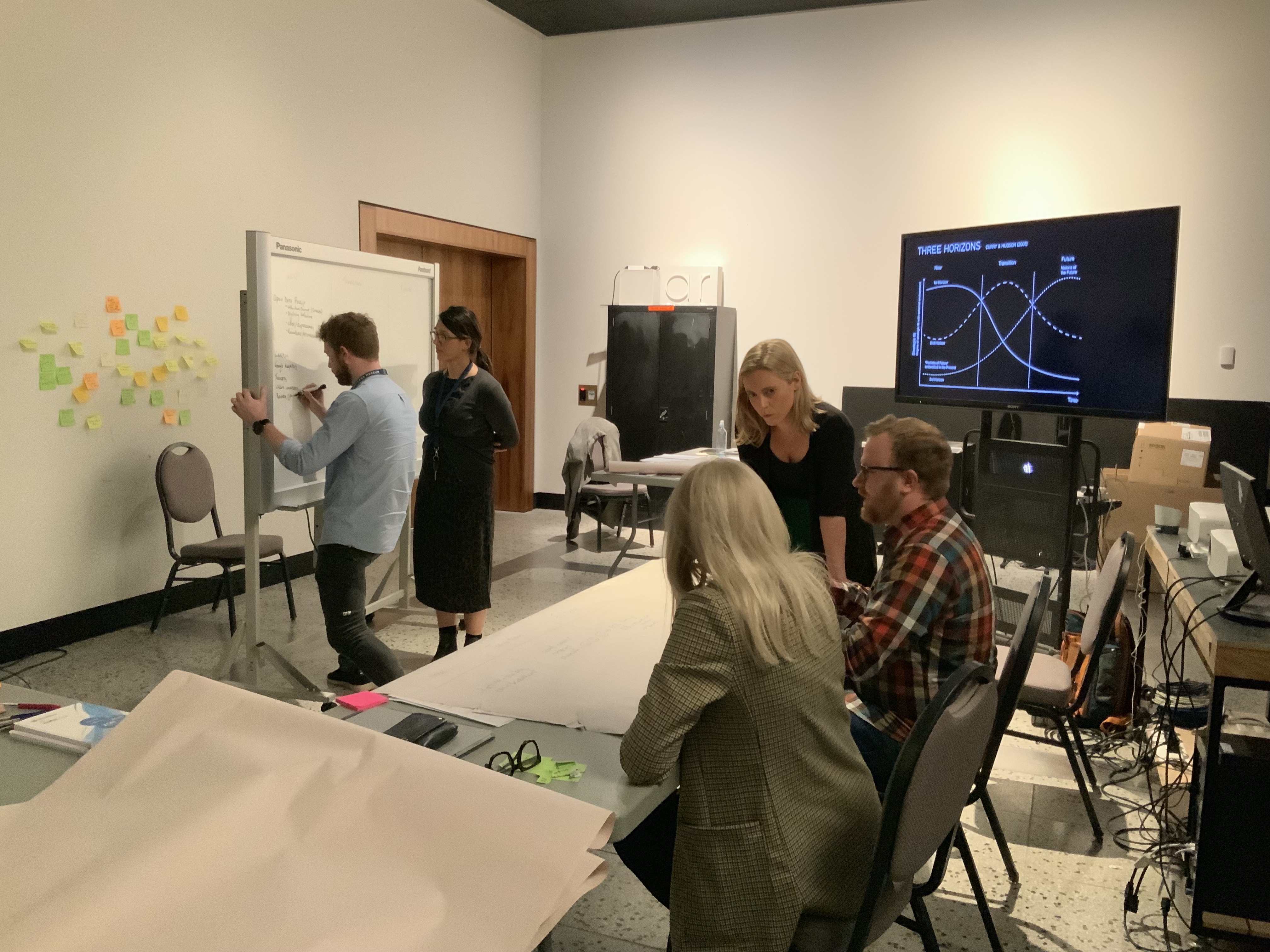
Workshopping museum data futures
How might a museum’s relationship to data change over time?
To commence the design phase of Raurau Mai (Living City), All Tomorrow’s Futures joined OOM to lead an onsite workshop at AWMM focused on data futures. The workshop explored the concept of data and its pasts, presents and futures. Exploring ‘the Future’ as plural, and futures as spaces of potential, the workshop posed the questions: “what are the multiple, contested futures of data that exist in the present?”, and “what might data become in the future?”
The purpose of the workshop was to explore the historical context of data visualisation and reflect upon the museum’s changing relationship to data. We interrogated initial ideas around temporality and possibility, and unearthed emerging issues around the capture, analysis and use of data. Questions around data sovereignty were explored, particularly ownership of data relating to Indigenous lands and waterways.
One exercise involved creating speculative ‘data artefacts’ from a future AWMM, to consider ways the museum might use data in the future. We encouraged workshop participants to reflect upon how they felt about the data futures these artefacts represented. We asked whether these uses of data aligned with the museum’s current mission, or whether they raised ethical questions.
From this workshop All Tomorrow’s Futures worked with OOM and the AWMM team to redefine the project brief. We situated this project in an understanding of how AWMM’s relationship to data has evolved over time, articulated desired visitor outcomes around data-driven experiences, and devised metaphors, framing devices and design principles for working with data in creating this unique installation.
Raurau Mai (Living City) opens to the public in March 2021 and will be on permanent display.
Foresight and Project Advisory: Ana Tiquia / All Tomorrow’s Futures
Collaborators: OOM Creative; Marco Cher-Gibard
Client: Auckland War Memorial Museum
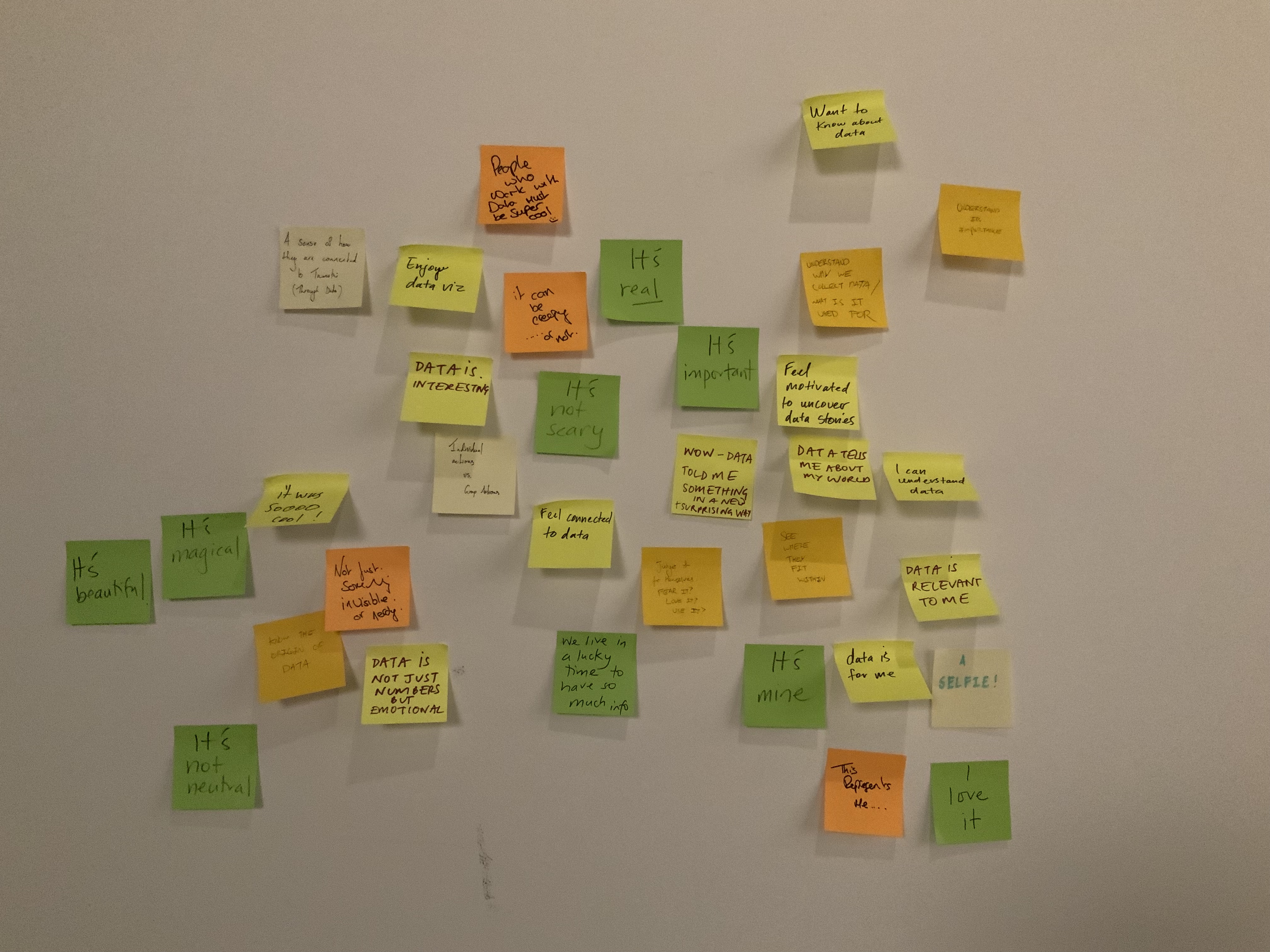
C
Workplace

Photo by Agniezka Chabros

WORKPLACE framed the ‘job interview’ as ritual, melding the visual language and performative aspects of an office interview with that of a tarot reading. Channelling both an employer and fortune teller, we created interactions with audiences that challenged the power dynamics between employer and potential employee; fortune teller and fortune seeker. Instead of receiving a forecast of work futures, audiences were invited to share their future hopes and anxieties and explore their desired futures of work. Each participant walked away with a Future Work Contract – an automatically generated document based on the participant’s desired future of work. Each personalised contract formed a personal ‘demand on the future’ and an illustration of the future work arrangements imagined by each participant.

Members of the public were invited to take part in a 20-30 minute interview, purportedly to determine their ‘future work readiness’. These semi-structured interviews were based around seven work tarot cards: The Hourglass explored hours of work and length of work week; The Eye addressed surveillance in the workplace; The Circle explored workplace inclusion and exclusion; The Cog asked questions about the future of automation; The Scales discussed how labour is valued and remunerated; The Precariat explored precarity in the workforce. The Heart card explored futures of care – visitors are asked who or what they think should care for the young or elderly in the future.

Each interview was closed with the ritual of signing the contract, stamping it as ‘FUTURE READY’ and shaking each participant’s hand to seal the deal.

perspective.” – participant, WORKPLACE
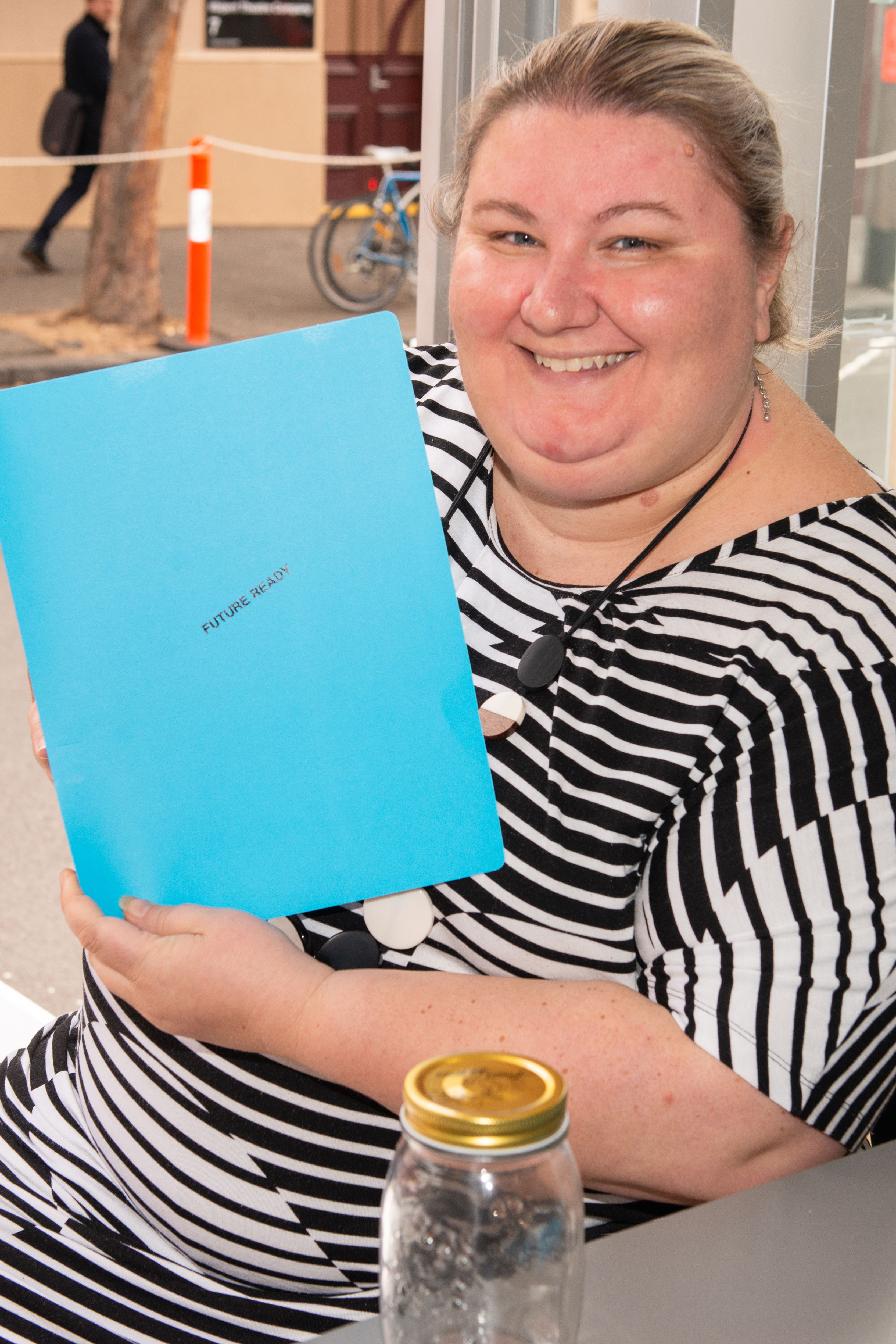
Graphic Design: Corey James
Interior architecture and design: Colby Vexler & James Taylor
Costume design: Annie Wu / Articles of Clothing
Commissioned by City of Melbourne
workplaceproject.net
D
Schooling Food



Production and Curatorial Advisory: Ana Tiquia / All Tomorrow’s Futures
Client: Monash University
Project Lead: Dr Deana Leahy, Faculty of Education, Monash University
Project Research Fellow: Dr Sian Supski, Faculty of Arts, Monash University
Design Direction: Warren Taylor, MADA, Monash University
Design and Graphics: Zach Beltsos-Russo
Special Collections: Dr Anne Holloway, Special Collections Manager, Sir Louis Matheson Library
schoolingfood.com
‘Children as health advocates in families: assessing the consequences’ was a study led by researchers at Monash University, University of Wollongong, and The University of Melbourne.

E
Heartfelt
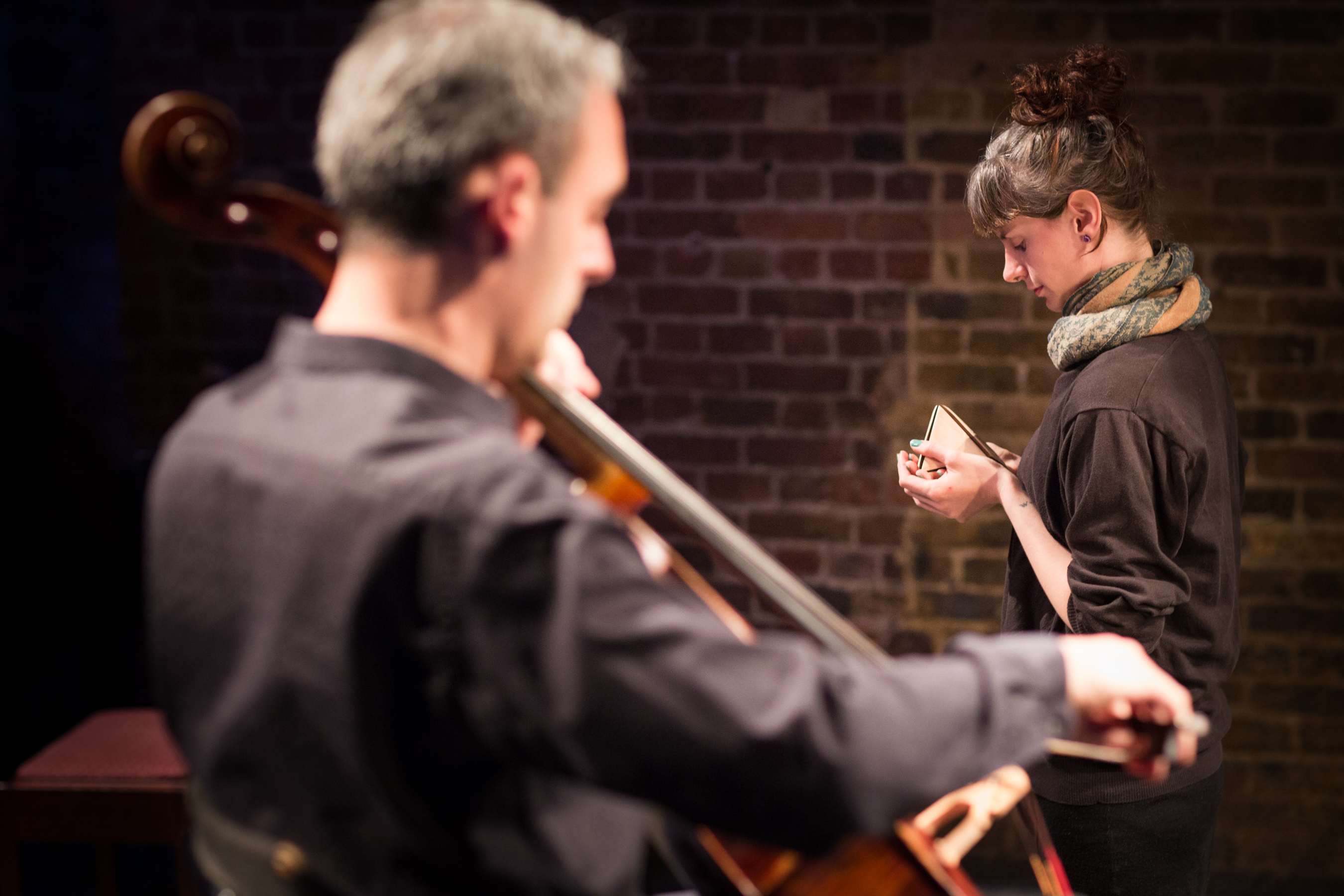 HEARTFELT live performance, Village Underground, London. Photo by Benjamin Ealovega
HEARTFELT live performance, Village Underground, London. Photo by Benjamin Ealovega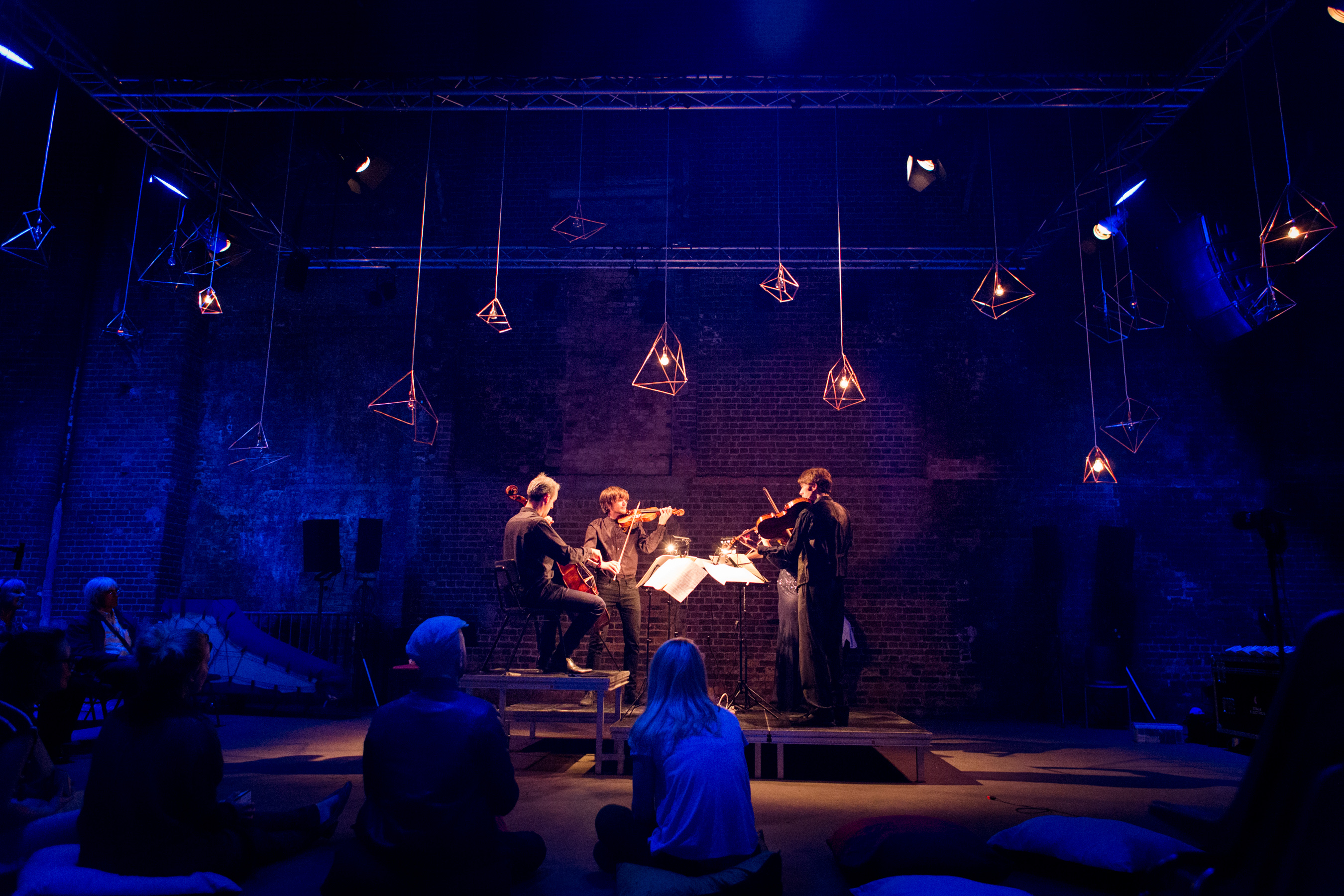
This innovative performance project grew out of an artist collaboration Ana fostered between London’s Sacconi Quartet, Britol-based robotics studio Rusty Squid, and interactive lighting designer, Ziggy Jacobs-Wyburn. Heartfelt was the recipient of an Arts Council England Grant for the Arts and was performed at the Village Underground (Spitalfields Festival), Bristol Old Vic (Bristol Proms) and the Lichfield Festival.
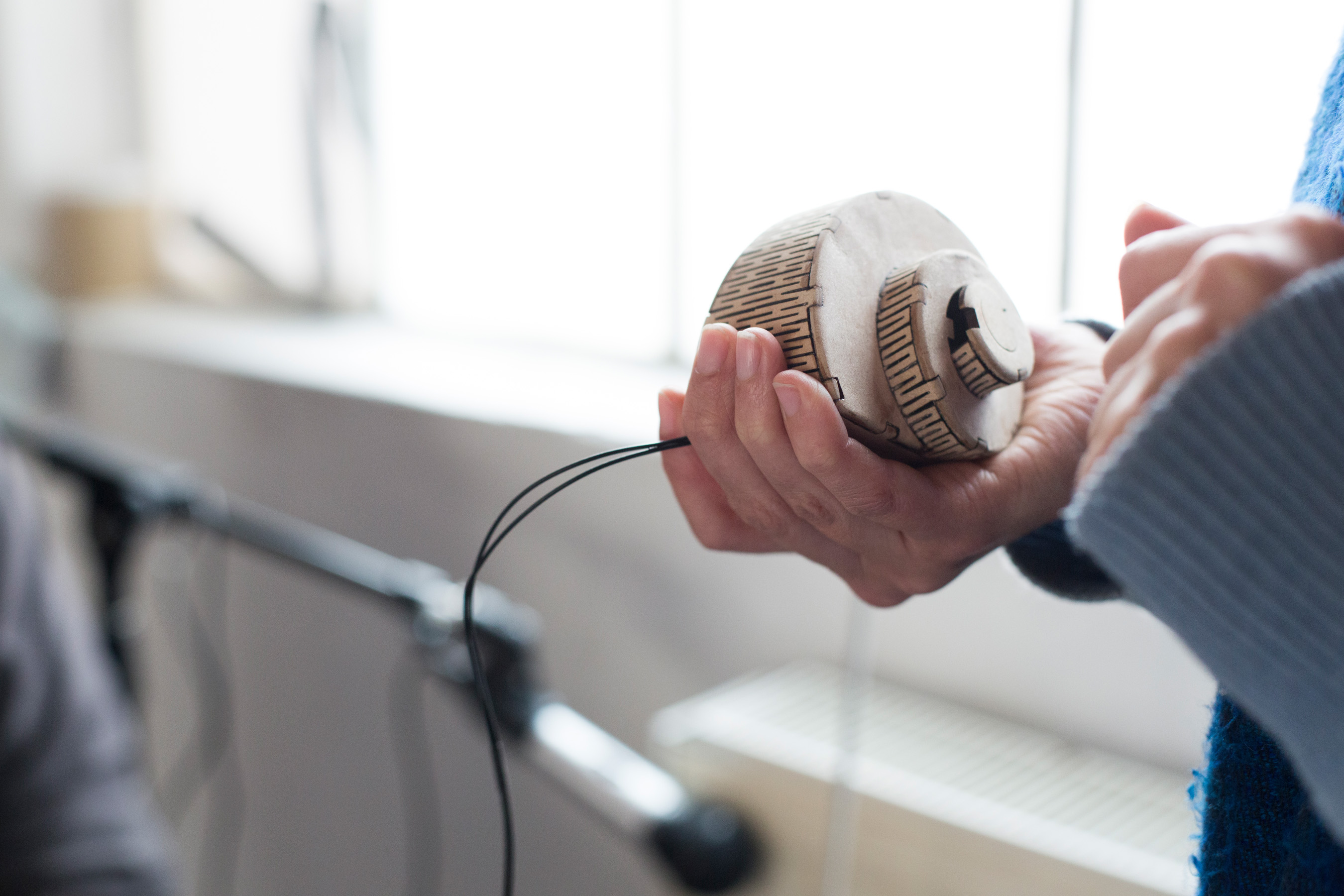 Testing an initial prototype of a ‘heart’ device. Photo by Benjamin Ealovega
Testing an initial prototype of a ‘heart’ device. Photo by Benjamin Ealovega
Final wooden, handheld, haptic, ‘hearts’ that transmit performer ECG data to audiences. Photo Benjamin Ealovega
The initial collaboration between Ana, the Sacconi Quartet, and concept for Heartfelt grew out of Hack the Quartet, a two day hackathon produced and hosted by Watershed’s Pervasive Media Studio in July 2013 in association with The Sacconi Quartet, Bristol Old Vic and Universal Music Arts and Entertainment as part of Bristol Proms.
Artists: Sacconi Quartet
Collaborators: Rusty Squid; Ziggy Jacobs-Wyburn
Creative Producer & Commissioning: Ana Tiquia
Project Manager: Emilie Giles
Artist Management: Ikon Arts
Original Robotics Concept: Silas Adekunle
Funded by: Arts Council England